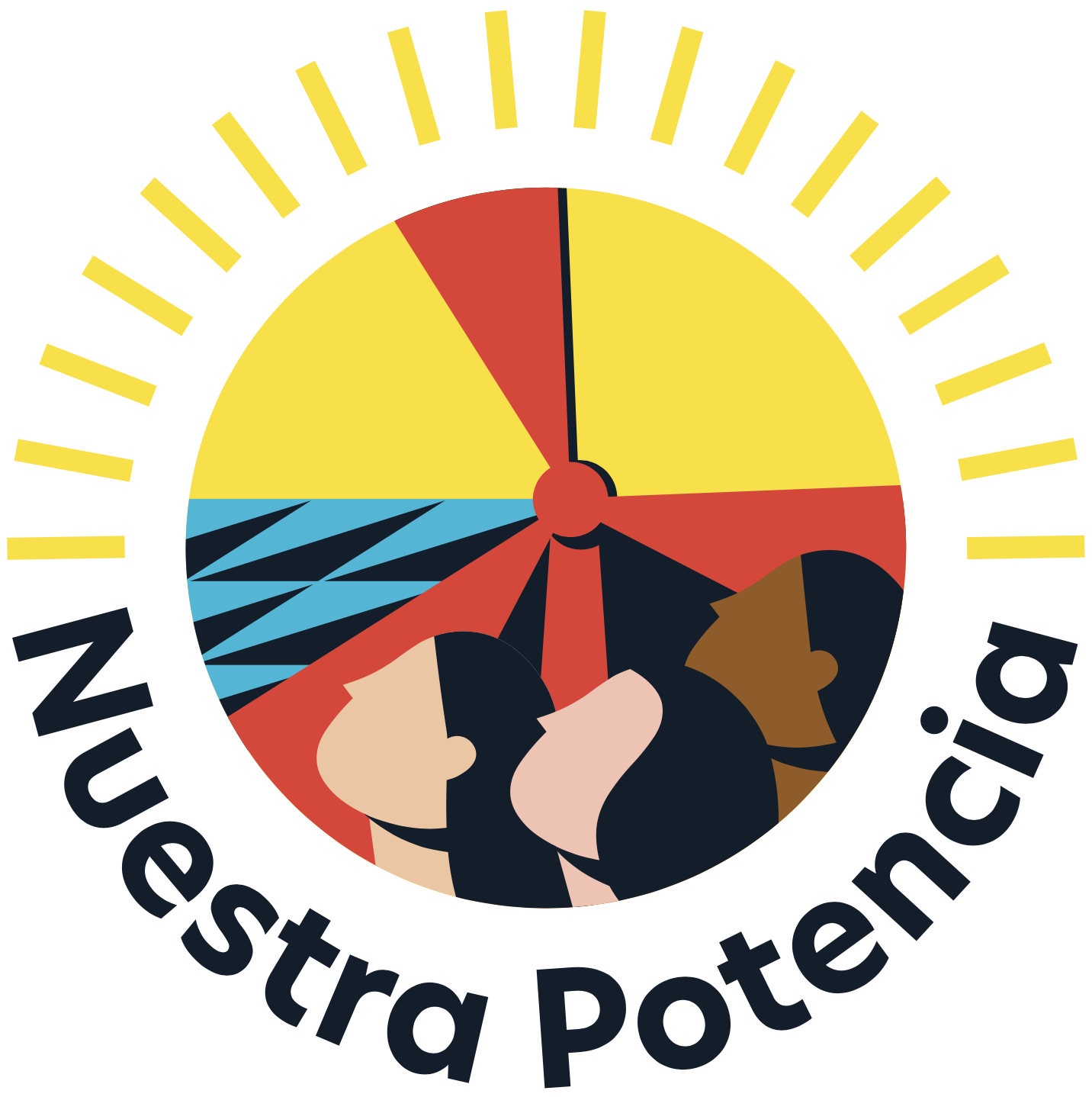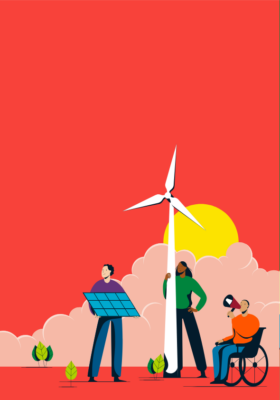“Remember this: We be many and they be few. They need us more than we need them. Another world is not only possible, she is on her way. On a quiet day, I can hear her breathing.”
― Arundhati Roy, War Talk
Once your campaign is launched — you have to keep the pressure. We recommend identifying who the various players are that need to be convinced and constantly assessing how you are doing towards those goals.
Keep up the pressure
This phase can be very long (decades!) or short (months!). Each campaign is different.
During this, you’ll want to keep experimenting with different tactics to persuade your targets and get more public support.
Las campañas necesitan impulso. La gente tiene que comprobar que dedicar su tiempo es importante. Sin embargo, mientras que las campañas son a veces una avalancha de acciones y noticias de último momento, otras veces son embestidas muy lentas. ¿Qué se puede hacer en esos momentos lentos para evitar que el impulso se detenga por completo?
The course of your campaign may vary widely. We have found four common road bumps to persuade:
- It can be hard to keep the energy going over multiple months or years. Here are some tips: How your solutions campaign may stall out — and the antidotes
- Campaigns can get stuck in tactical ruts — meeting follows meeting with little progress to show for it. Varying up with public pressure and generating buzz can often help: What tactics to keep momentum on my solutions campaign?
- Banging your head against a bureaucracy can really slow a project down and decrease morale. Here are some tips: How your solutions campaign deals with bureaucracy
- Opposition can show up from surprising locations. As you build your campaign, it is helpful to keep reaching out to new communities that might show opposition if they are not brought in. Here are some tips: Qué oposición puede sorprenderte (y cómo contrarrestarla) (including arguments that solar panels are destructive: ¿Qué sucede con los derechos humanos y ambientales y la energía solar?)
What are tactics to keep up momentum?
Most targets are going to need a real push, and at some point it may be appropriate to escalate the campaign – from soft creative actions through to office occupations.
If your team thinks only about soft actions, some advice:
Do incorporate the possibility of escalation into your campaign. The principle of escalation is that you can give decision makers numerous chances to concede to your demands in response to increasingly disruptive tactics which make it more and more difficult for them to reject you.
A practical way to do this is to bring in someone to do a training for your group who had to escalate (or didn’t and lost) — and to talk about how escalation can be helpful.
Every time you expect a decision from management, plan for the possibility they might just sit on it for an extended period of time. They might meet all of your demands, none of them, or any number in between. Each possibility may require a different response in message and level of disruption.
Disruption may mean many things in different contexts. Sometimes a simple banner can get attention to the issue. Tactics used are always nonviolent.
If your team thinks only about rapidly escalating, some advice:
A common way to lose a “yes” campaign is to lose your allies too early. You don’t want to turn off internal allies — or isolate them. Keep your powder dry as long as possible.
So plan for a period of non-escalation by setting some internal timelines.
For both groups a piece of advice: Set a reasonable timeline for your target — so your team has agreed when you’ll escalate if they don’t take meaningful steps forwards. For example, “Our insiders say they could make this decision in 6-months. So we’ll do this campaign without any escalation for 10-months. We’ll let them kindly know if things don’t start moving in 10-months, then we’ll be forced to escalate…”
Fighting bad policy: dual track activism
During your campaign you’re going to become experts in your local policy related to renewable energy. Local, regional, national, even international policies — all of them matter to your campaign.
Some government incentives and policies can be supportive and make a huge difference in our campaigns. Take a few examples:
Facing frequent outages and a lack of a national power strategy, Chad has been investing in off-grid solar kits to support health clinics and small businesses with reliable energy.
The US Inflation Reduction Act offered a range of incentives, including guaranteeing federal credits worth 30% off the cost of installing solar on their homes until 2032.
40% of Nigerian homes are dependent on gasoline generators (costing nearly USD $14 billion per year). Solar had a very slow start. When Nigeria removed a gasoline subsidy, the demand for solar power skyrocketed — even though the government does not have any incentives that promote solar.
Uruguay has been a pioneer in renewable energy independence with a host of policies that led it to have 98% of its energy sourced from renewable energy. Its policies have included big projects like electric highways (for electric charging along the highway). But its strength has been local energy production, like its Solar Thermal Law, which required certain new construction to have 50% of its water heating from solar or exempting wind power equipment from its value added tax.
To see incentives, compare them with other countries, and see incentives that could support it, you can use a handy tool from RISE: https://rise.esmap.org/.
By this point in your campaign, you’ll know a lot of policies that get in the way of your campaigns. Some you can work around. Others you’ll have to take on directly.
Let’s acknowledge the challenge. It’s hard to work on a local renewable energy project and a policy-level fight. It’s also hard because they have different approaches:
- Be local, relatable, and solve problems: If you ask people, they have problems in their lives. An abstract, far-away solution doesn’t move them. You speak to them by offering them something to make their life better: getting their home power or offering solar panels that reduce their energy bill.
But the people who focus solely on policy might argue:
- The problem is too big. It’s too easy to blame individuals for their 40 kilowatt light bulb. But focusing on a local home or even a whole city leaves off-the-hook the terawatt decisions of the fossil fuel industry to continue to promote its product. The obvious answer is to change policy. When the US made laws against incandescent light bulbs they estimated savings up to 569 TWh annually by 2035! This is why it is better to change policy.
Instead of an “either/or” — we suggest an “and” approach:
- “Dual track activism” is about combining two ways of making a difference – changing big rules (policies) and doing small things in our own lives. When we put these two approaches together, we can make the largest impact — one that speaks to where people are y builds change at scale.
Admittedly, this may become a whole additional level of your campaign. Here are examples of how that might look.
You might need to connect up with local activists —
In the US, a medium-sized solar project in Media, PA had been stymied by the electrical supplier PECO slow-walking hooking up the solar project. The community connected up with local activists who were protesting other aspects of PECO. They showed up at a local protest and told their story during the action. The utility was scared enough about the growing radicalization of seeing community members doing protests, the project was fast-tracked and got hooked up.
Or you might need to connect the people who are impacted by the policy —
Although there are over 40 renewable energy cooperatives in Turkey, only 3 are active. This is due to a number of regulatory barriers to establishing renewable energy cooperatives, including legislation that ties electricity consumption to a single common electricity meter. Due to legislative changes in 2019, the energy market is completely under the control of private companies. The solution is to bring together these cooperatives and those who want change.
Or you might need to grow out an entirely new group —
Take Alva Feldmeier, an activist for 350 in New Zealand. She saw local groups building dynamic community-owned energy systems, such as Raglan Local Energy o los Energise Ōtaki. The local groups were striking a blow against the grip of the fossil fuel industry — they were often led by Māori groups or well-resourced, middle class groups. The need remained to expand more widely to work at scale.
She realised a bigger campaign needed to weave together their work — and she ended up launching a “Homegrown energy campaign in New Zealand.” Its goal was to get the government involved in funding community-owned projects — “By 2035, we should be generating 750MW and by 2050, that should be at least 1.5GW.”
Sabemos que, para lograr el gran cambio que buscamos con esta campaña, necesitamos que el gobierno central actúe y modifique las políticas que transformarán fundamentalmente la forma en que generamos, obtenemos y consumimos energía. Pero este es un recorrido de largo aliento que estará lleno de numerosas pequeñas victorias (y derrotas) en el camino.
“A huge part of the success of this campaign lies in the public outrage we can build against our conventional energy system and the public support we can build for local community energy projects. The easiest way we can connect and engage people is on a local level as people deeply care about their community. This counts for both individual people but also decision makers.”
Because they were rooted in local community groups already, they started with local power — getting petitions to pressure local councils to endorse the campaign goals. Their theory was to build power and pressure from below, before launching a large petition drive at the national level.
Every effort may be different — but oftentimes during this part of a campaign people realise they need to be part of a bigger network of groups to fight bad policy. It can be a challenge because there are so many things to do — but this step is often critical to the success of projects.
Keep growing and connecting
People make these projects happen. While some projects simply dance through all the right protocols, others win because of chance matters, new alliances, escalated efforts, or joining with larger groups and networks.
As you go through the routines of city planning meetings and filings, remember each moment is a chance to connect with humans — to get inspired about the vision you are building. You never know who of those you touch along the way will be critical in implementing the plan.
Being open to connecting with other people is a valuable skill that can enhance your campaign. New ideas, perspectives, resources, opportunities may emerge out of it. By truly listening to what others are saying to you, showing genuine interest and actively engaging in the conversation, can help build a great foundation for connection that may end up helping your work.
Remember that building connections is a gradual process, and not every interaction will result in a deep connection. Keep being human. Keep networking outside your campaign.
Supplemental Resources








